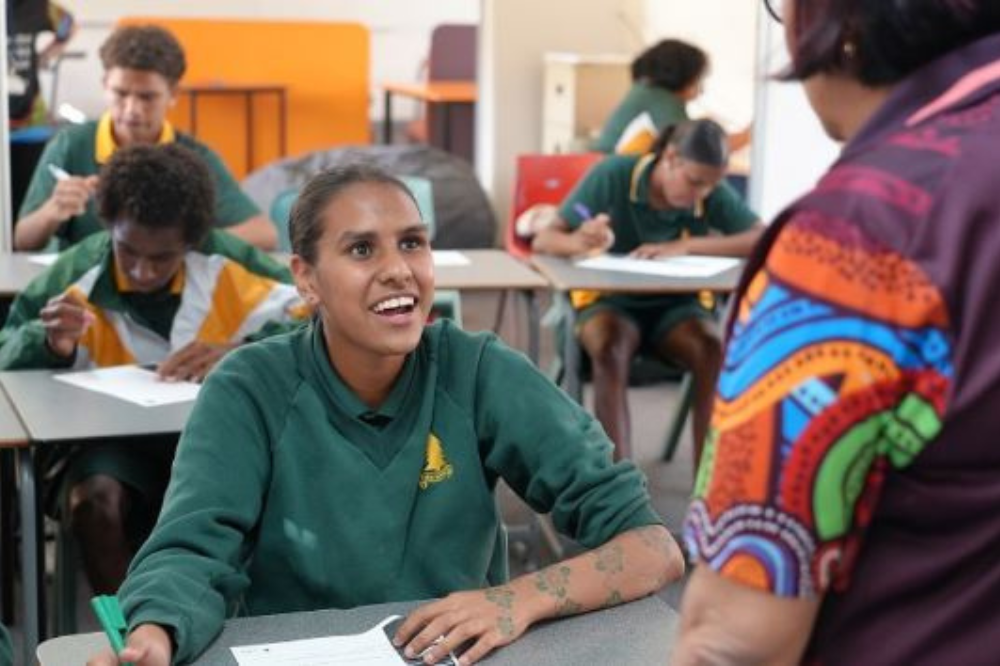
Every year when the NAPLAN results are released, a common trend is evident. Indigenous students lag behind their non-Indigenous peers.
The proportion of First Nations students who meet the National Proficient Standard (achieved a score above 480) is just 32% for reading literacy, 27% for mathematical literacy, and 31% for scientific literacy.
For years, schools, communities and education policymakers have been looking into how this worrying trend can be reversed, both through NAPLAN analyses and measuring how Indigenous student outcomes are tracking under the government’s ‘Closing the Gap’ reports.
However, some experts propose that to make meaningful change, policymakers might need to look at NAPLAN data in a different way.
A new approach
A new study, conducted by researchers from Griffith University, the Queensland University of Technology and Monash University, proposes a new way of analysing NAPLAN data by comparing Indigenous students with other Indigenous students, and in doing so, “getting more nuanced information about what is working and where”.
“This represents a significant shift from the focus on ‘closing the gap’, which repeatedly highlights deficits in Indigenous students’ progress,” the researchers recently wrote in an article that appeared in The Conversation.
The new quantitative method the researchers developed is called ‘within-cohort, peer matching’. Unlike the traditional method of comparing Indigenous students’ academic performance with non-Indigenous students, this approach compares Indigenous students with their Indigenous peers from the same grade and type of geographical location across the country.
“In our study, we analysed ten years of NAPLAN data [2009–2019] on Indigenous students. This included information on a student’s grade, the state or territory where they live, and whether they live in a major city, regional, remote or very remote area,” they wrote.
“We then used several statistical models to investigate differences in students’ performance.”
What they found was telling.
The study uncovered patterns that would not have been obvious if the researchers had focused solely on the disparity between Indigenous and non-Indigenous students’ performance.
One of these patterns include the impact of remoteness.
“Previous analysis has shown the more a remote a student is, the less likely they are to succeed at school,” they wrote.
“This is largely due to the difficulty of attracting teachers and a lack of adequate resources. But by diving into more detail, our analysis shows there are considerable differences when comparing states and territories within the same remoteness category.”
Another pattern they identified was that different subjects have different results.
“Maths results appear to be less impacted by a students’ remoteness, compared to reading and writing. We don’t yet know why this is the case. But now we can focus research efforts on better understanding this finding.”
Where Indigenous students are performing highly
As part of their study, the researchers looked at how well Indigenous students did in NAPLAN across different states and territories within matching remoteness categories, relative to their Indigenous peers in the same grade.
An example of this was comparing Year 3 students in major cities across New South Wales, Victoria, Queensland, Western Australia, South Australia and the Australian Capital Territory.
“This helped us find out where students are doing better or worse,” they wrote.
Some examples where students are performing well relative to their matched peers include:
- in major cities: primary students in New South Wales and primary and secondary students in Victoria
- in regional areas: Year 3 in New South Wales, primary and secondary schools in Victoria and primary and secondary schools in Tasmania.
- in remote areas: primary schools in New South Wales, primary and secondary schools in South Australia.
- in very remote areas: primary and secondary schools in New South Wales, primary and secondary schools in Queensland.
Where are performances low?
The analysis also showed there are some groups of Indigenous students who are doing relatively poorly compared to their Indigenous peers. This includes:
- in major cities: Year 9 in Queensland, primary and secondary schools in Western Australia and primary and secondary schools in South Australia.
- in regional areas: Year 7 in Western Australia, primary and secondary schools in the Northern Territory and primary schools in South Australia.
- in remote areas: primary schools in Western Australia, primary and secondary schools in the Northern Territory.
- in very remote areas: primary and secondary schools in the Northern Territory and primary schools in South Australia.
Policymakers must look beyond just ‘closing the gap’
The researchers say these findings challenge the traditional framing of Indigenous students as progressing poorly compared to their non-Indigenous peers.
“They also provide opportunities for more nuanced policy interventions and more targeted research,” they wrote. “Using this approach, we can study the school-level factors that impact performance within the cohort of Indigenous students.”
The researchers propose looking at what is working for Year 3 students in regional NSW and apply that elsewhere, or looking at what is not working for Year 9s in major cities in Queensland.
“We can also look more closely at why numeracy performance seems to be less impacted by the degree of remoteness,” they wrote. “Ultimately, it highlights the need for alternative measures of Indigenous success, beyond merely ‘closing the gap’.”


